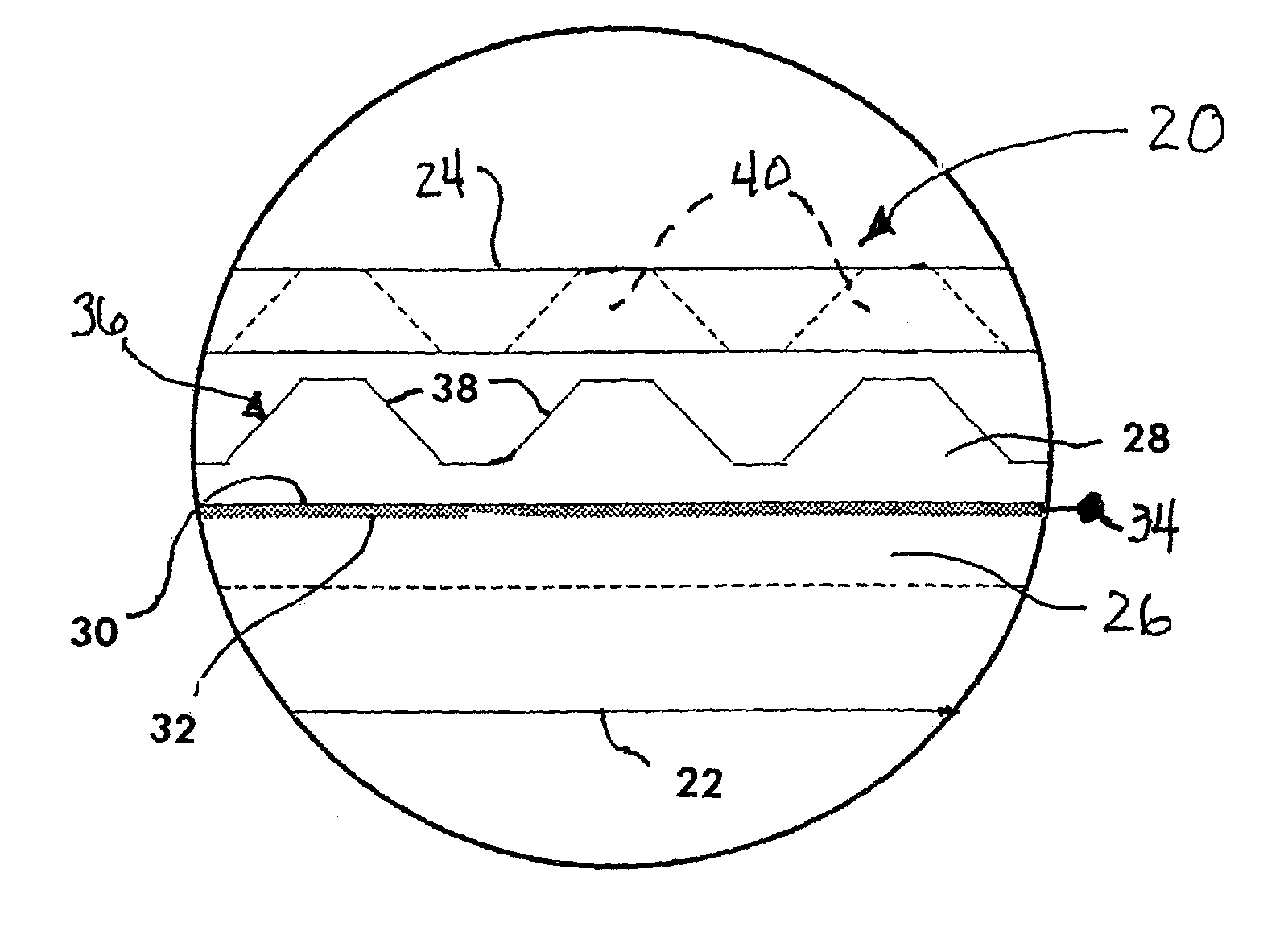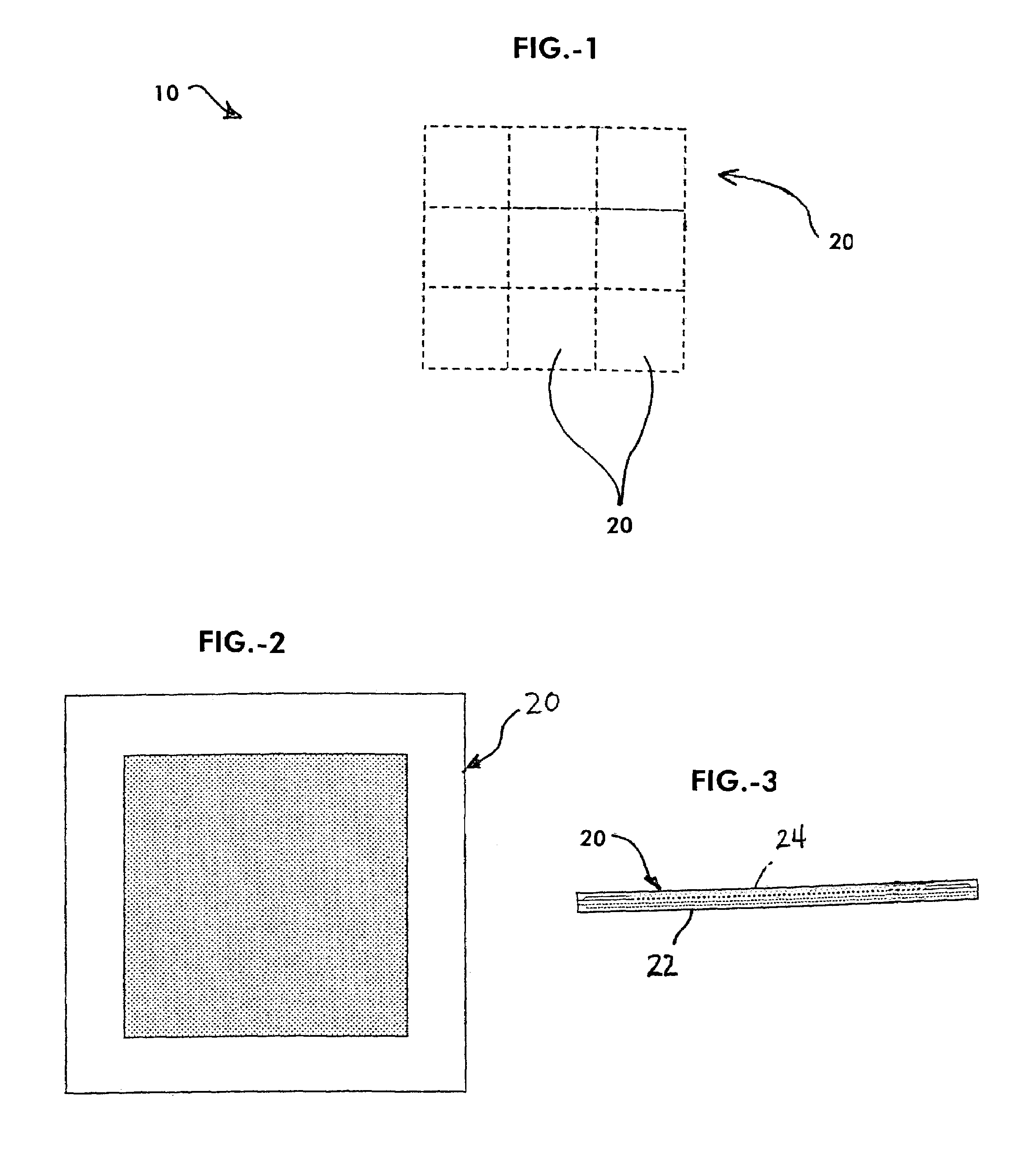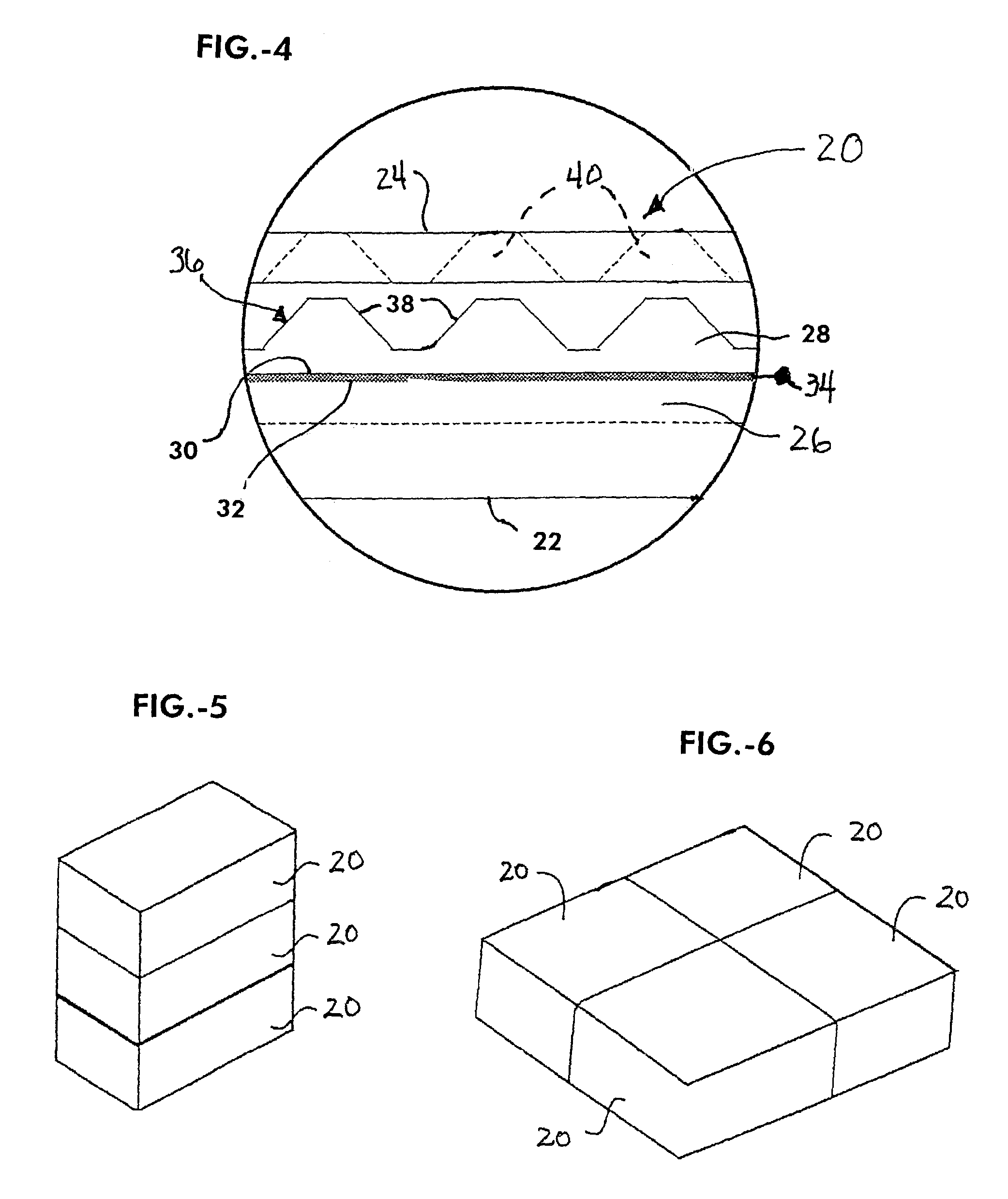Meso-to-micro-scaleable device and methods for conversion of thermal energy to electrical energy
- Summary
- Abstract
- Description
- Claims
- Application Information
AI Technical Summary
Benefits of technology
Problems solved by technology
Method used
Image
Examples
Example
[0020]Referring now to the drawings, FIG. 1 shows a system 10 for conversion of thermal energy to electrical energy according to an embodiment of the invention. The system 10 may have a square configuration, such as shown in FIG. 1, but the shape of the system or devices according to the invention may be of any desired configuration. In this manner, the system 10 can be configured to be adapted for a particular application or environment, where an alternative shape may be more efficient or convenient for integration and use with a device, medium or environment in which it is used. In this embodiment, the system 10 is also fabricated as a meso-to-micro scale device, wherein it can be used in conjunction with miniaturized equipment or devices or environments where larger scale devices simply could not be implemented. In this regard, the system and methods according to the invention provide the ability to convert thermal energy into electrical energy at an electronic chip-scale, which ...
PUM
 Login to View More
Login to View More Abstract
Description
Claims
Application Information
 Login to View More
Login to View More - Generate Ideas
- Intellectual Property
- Life Sciences
- Materials
- Tech Scout
- Unparalleled Data Quality
- Higher Quality Content
- 60% Fewer Hallucinations
Browse by: Latest US Patents, China's latest patents, Technical Efficacy Thesaurus, Application Domain, Technology Topic, Popular Technical Reports.
© 2025 PatSnap. All rights reserved.Legal|Privacy policy|Modern Slavery Act Transparency Statement|Sitemap|About US| Contact US: help@patsnap.com



